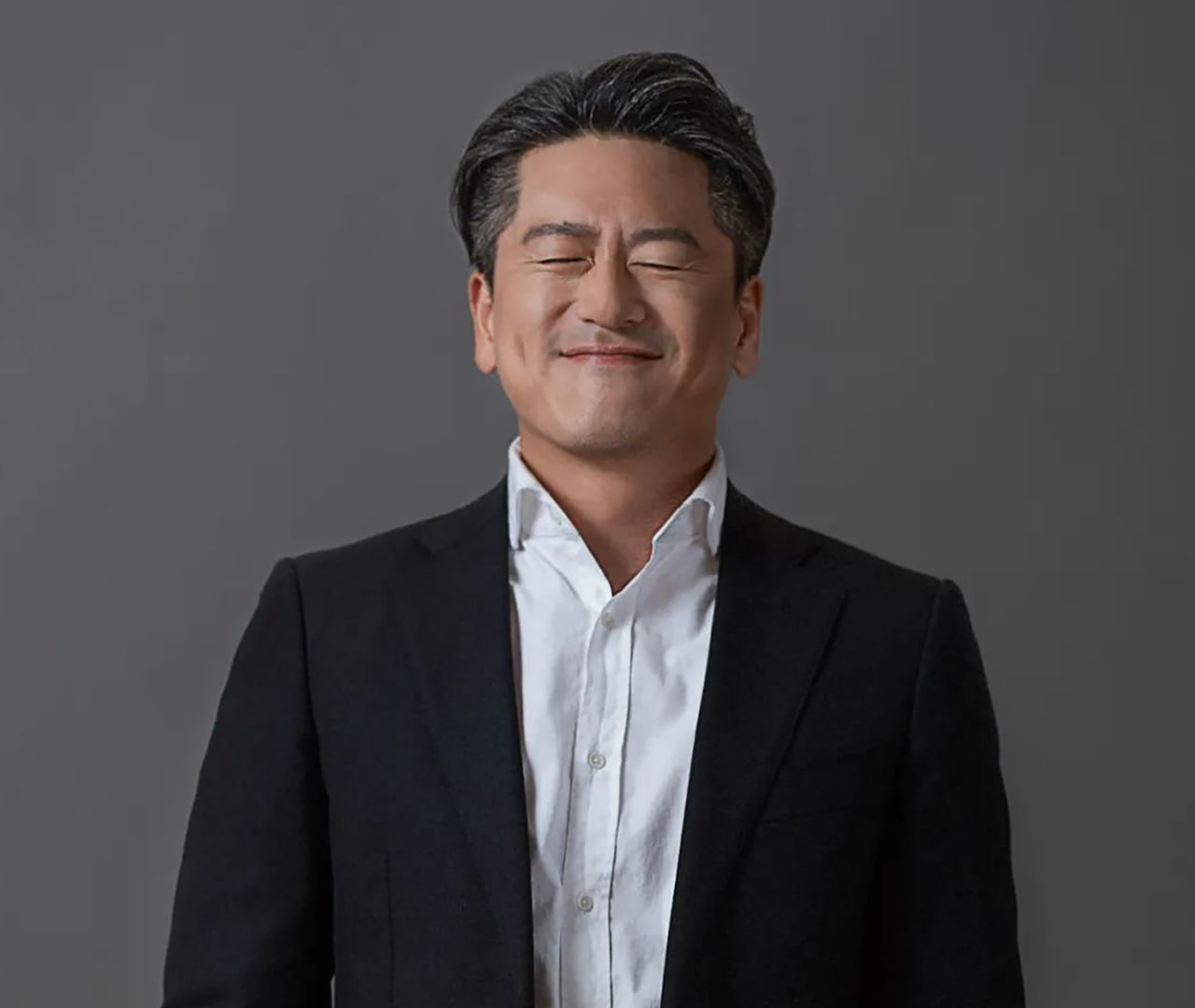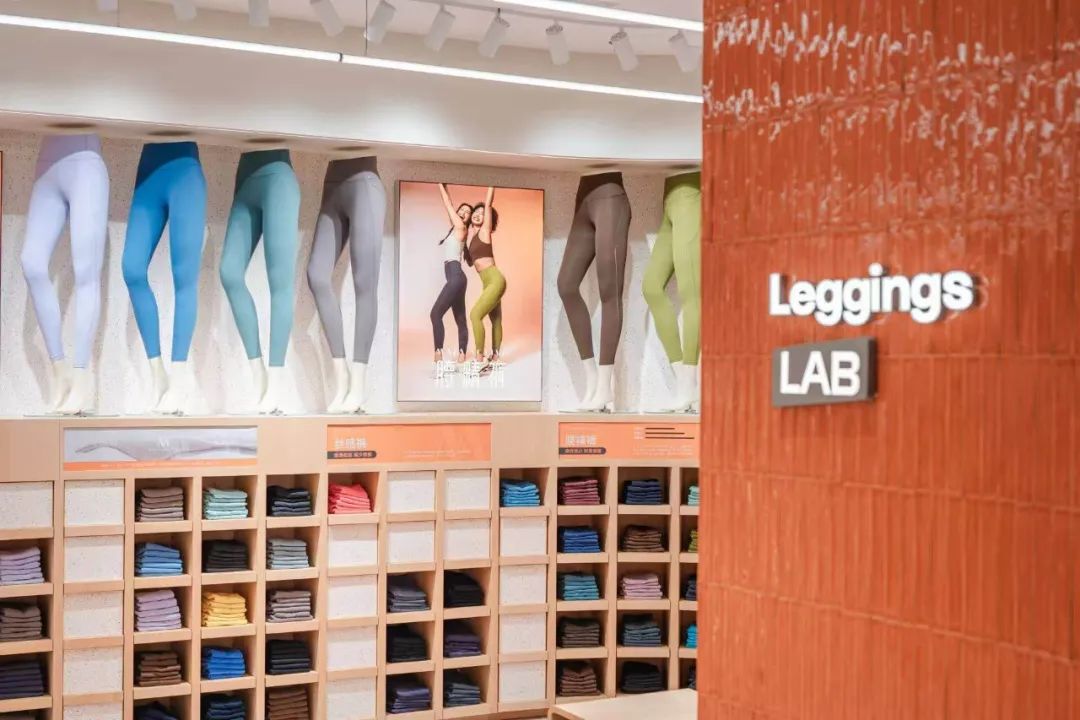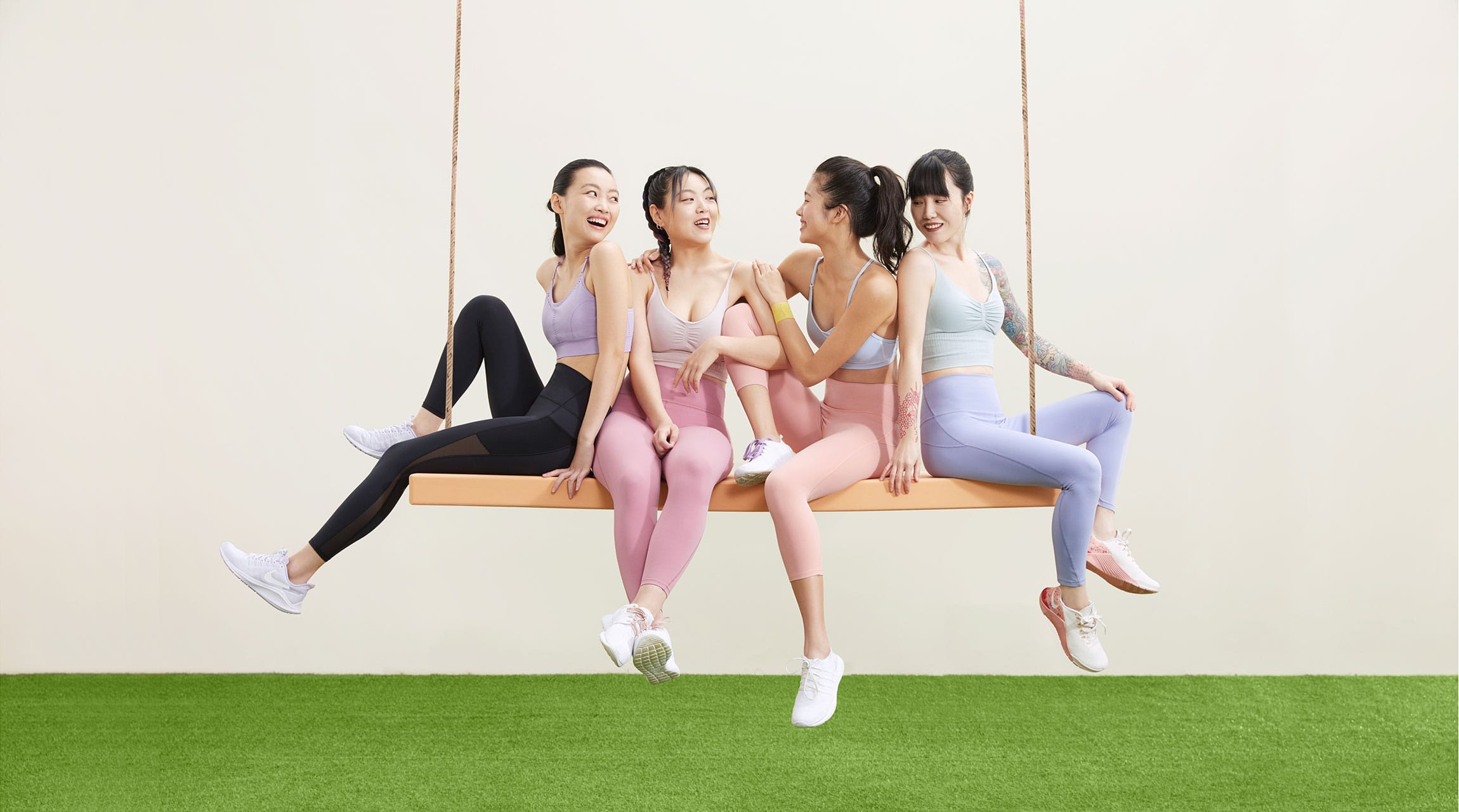In October 2023, Anta Sports announced that one of its subsidiaries had acquired a 75.13% stake in Maia Active, a homegrown yoga wear brand designed specifically for Asian women.
Founded in 2016, Maia made its name by tailoring products to the contours and lifestyles of its core audience. In 2022, it reportedly sold over 300,000 pairs of its signature sculpting leggings, designed to emphasize the waistline. That year, the brand forecasted total sales across all platforms to hit RMB 500 million (USD 70 million).
But as Maia attempted to scale from a digital-native business to an omnichannel presence, it ran into growing pains. The acquisition gave Maia access to Anta’s offline retail know-how, as well as capital and supply chain resources.
By December 2023, Maia’s founder announced on WeChat that she would step down from day-to-day operations within a month, though she planned to remain a shareholder and founder.
In May 2024, Anta named Steve Cho, its former vice president of retail, as president of Maia Active. Cho now reports directly to Xu Yang, who serves as CEO of Anta’s professional sports division and head of its core brand. In Anta Sports’ midyear financial report, Maia was listed under the “all other brands” category for the first time.
These developments mark a clear transition of control. They also highlight Anta’s commitment to building out its portfolio in the women’s activewear category.
“There’s this widespread notion that culture clashes are inevitable after an acquisition,” Zhao told 36Kr. “But with Maia, the integration was smoother than we imagined.”
A South Korean national, Cho has nearly 25 years of experience in activewear. Prior to joining Anta, he held leadership roles at E-Land Group and spearheaded New Balance’s explosive growth in China, growing revenue by a factor of 30. What drew him to Anta, he said, was its efficiency and flatter internal structure.
Since becoming president of Maia, Zhao has made it a priority to preserve the brand’s original tone and internal culture. “We don’t do PowerPoint meetings here,” he said.
His office at Maia’s Shanghai headquarters is more like a lounge-style meeting room. A parody sign hanging above the door reads “Stevebucks,” a nod to his English name. “I’d much rather people come in, grab a coffee, and just talk,” he said.
When asked whether he still connects with Maia’s founder, Cho said: “Yes, we talk. She still drops by the stores and gives feedback. She really likes the direction we’ve taken.”

The following transcript has been edited and consolidated for brevity and clarity.
36Kr: You became president of Maia in May last year. What was the state of the brand at the time?
Steve Cho (SC): Maia had strong word-of-mouth around its products, but it struggled with the transition from online to offline retail. Anta has deep experience with the brick-and-mortar model. After acquiring Maia in October 2023, one of the first things we did was revisit the brand strategy. I was involved from the beginning and fully committed after taking over as president.
36Kr: What changes were made?
SC: We focused on three major areas. First, we clarified our strategic direction. We’re now targeting the mid-to-premium segment of the market. That was a major shift in positioning.
Second, we restructured the product line to double down on yoga. We eliminated around 10–15% of non-core SKUs, such as outdoor jackets and other items that didn’t align with our focus. By the end of Q3 2024, the product reset was complete.
Third, we upgraded our retail strategy. Maia had about 36 stores when I took over, and most of them were small, at around 100 square meters each. After the acquisition, we moved to a flagship, experience-focused store model. Bigger stores, more immersive retail, and that offered a visible change.
36Kr: How many stores are there now?
SC: Around 45. In addition to tier-one cities, we’ve also expanded to places like Chongqing and Chengdu.
36Kr: What kind of concept stores are you building?
SC: We’ve developed four formats:
- Yoga Studio is our large-scale flagship concept, designed to host Maia Fun Club community events. Each city gets one.
- Yoga Gallery offers a spacious, gallery-like setting that showcases yoga culture through curated product displays.
- Leggings Lab is an immersive space centered on our signature leggings line, built for deep product exploration.
- Her Closet is a socially minded concept with oversized fitting rooms, where women can try on outfits, take photos, and share their looks with friends.

36Kr: Any store expansion plans?
SC: We aim to grow to around 55 stores this year, focusing on tier-one and tier-two cities. We go where our customers are.
36Kr: What’s the sales and SKU share for leggings and bras?
SC: Combined, they account for about 50% of revenue and roughly 30% of SKUs. We’ve rolled out a “Yoga 360” strategy to develop full-look outfits for yoga scenarios, for example, pairing leggings with sport tees.
36Kr: But Maia still sells down jackets?
SC: Those fall under the Yoga 360 umbrella. It’s about meeting the needs of customers as they travel to and from yoga classes. We also have a “Yoga Plus” line that supports other types of group fitness classes with specialized apparel.
36Kr: Maia is positioned as a mid-to-premium brand. Any plans to raise prices?
SC: Our core product prices remain stable. New SKUs will be priced based on product strength and market response. Premium products can justify a premium price. If the quality is there, people will pay.
36Kr: But there’s increasing price sensitivity in the market.
SC: There are definitely more affordable yoga brands popping up. But we’re not in that race. Our product requirements are different. We benchmark against the best.
36Kr: Sounds like Lululemon is your main competitor?
SC: For most people, when they hear “yoga,” they think of Lululemon. But they don’t think of a second brand. Our goal is to change that: when people think yoga, they should think Maia Active.
36Kr: Alo Yoga hasn’t entered China yet.
SC: True. We’re keeping an eye on how they perform in other Asian markets. South Korea and Japan already have strong homegrown brands. China doesn’t, yet. That’s our opportunity.
36Kr: Lululemon founder Chip Wilson is Maia’s brand advisor. What’s the nature of your collaboration?
SC: We stay in close contact. We both believe that brand leadership isn’t about size. It’s about earning genuine love from customers. Great products make great brands.
36Kr: How does Maia compare to Nike and other international players?
SC: Maia is laser-focused on Asian women. We research tone matching for skin tones, analyze body shape differences, and design accordingly. Our leggings are engineered to fit five key zones: waist, hips, crotch, knees, and ankles. Some Western brands just shorten the inseam.
We also innovate on fabric. Our sculpting leggings use ultra-fine yarns for enhanced smoothness and skin-feel. Our so-called “cloud-feel” leggings are double-brushed and offer twice the stretch of typical fabrics, which is ideal for yoga.
We custom-develop textiles based on yoga movement dynamics. Our fabric partners are top-tier. Some also supply global leading brands.
36Kr: Any other ways Asian women’s needs differ?
SC: Take bras. Asian women often prefer “no-show” options, while Western brands prioritize breathability and use thin padding. We developed a bra innovation center to tackle this. For example, our “chiffon cup” bra, launched in February, is six times more breathable than the national standard while maintaining privacy.
36Kr: In China, some women wear yoga pants as everyday fashion.
SC: Exactly. So aesthetics matter. But our philosophy is: function first, fashion second.
36Kr: You recently named Esther Yu as brand ambassador and introduced the “three highs” woman concept. What does that mean?
SC: It stands for high energy, high emotional value, and high self-worth. It’s about encouraging women to be themselves. Esther herself is energetic and authentic, which are qualities we want to convey. It reflects our product values as well.
36Kr: How do you build brand awareness so Maia becomes top-of-mind for yoga?
SC: Post-acquisition, we invested heavily in the community. In 2024, Maia ran about 300 events, and we’ll match that this year.
We also partnered with Pure Yoga to co-develop a product line called “Pure by Maia Active.” And through our Maia Pro program, we’ve signed 120 professional yoga instructors to co-create and evangelize our products.
36Kr: How’s your member growth since May last year?
SC: We’ve roughly doubled our membership base. Our Tmall and Xiaohongshu followers have also doubled.
36Kr: Do you visit stores? What do you focus on?
SC: I do store visits three to four days a week, mainly to watch customer behavior. Why do they leave without buying? What do they touch? What don’t they try on? I talk to customers, sales staff, store managers—anyone who can help us improve.
36Kr: What’s the revenue split between online and offline?
SC: Originally, Maia’s sales were 100% online. Now, we’ve flipped that. Last year was 50:50. Today it’s around 40:60, and we’re aiming for 30:70. Since May, offline sales have been growing at a strong double-digit rate.
36Kr: Yoga is still a niche compared to running or basketball.
SC: Maybe, but China is huge. In tier-one and tier-two cities, the yoga category will grow substantially over the next five to six years.
36Kr: Even Lululemon is seeing slower growth.
SC: We respect them. They helped educate the Chinese market. That’s valuable.
36Kr: What has been the biggest benefit of Anta’s support?
SC: Systems. From online-offline integration to logistics and supply chain, to backend support. We’re now far more structured and efficient.
36Kr: How much of the original team has stayed?
SC: Since May 2024, the key teams in marketing, merchandising, and product development have remained largely intact. I think the integration is going well. My office is open for anyone to stop by and chat. No slides needed.
36Kr: What’s your long-term goal for Maia?
SC: To become the number one yoga apparel brand in China, and eventually Asia. That’s our north star.
36Kr: What’s the timeline?
SC: We’re moving fast. And we want to grow the whole yoga market along with us.
36Kr: What’s your current focus?
SC: Improving product strength, sticking to our current positioning, and slowly elevating the brand.
KrASIA Connection features translated and adapted content that was originally published by 36Kr. This article was written by Xie Yunzi and Zheng Huaizhou for 36Kr.

